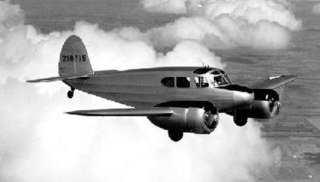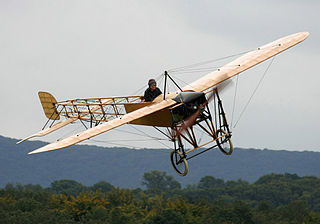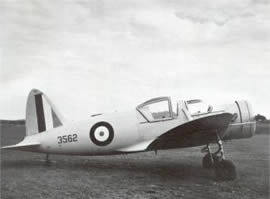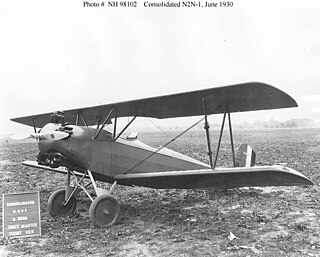
The Lockheed Hudson is a light bomber and coastal reconnaissance aircraft built by the American Lockheed Aircraft Corporation. It was initially put into service by the Royal Air Force shortly before the outbreak of the Second World War and primarily operated by it thereafter. The Hudson was a military conversion of the Model 14 Super Electra airliner, and was the first significant aircraft construction contract for Lockheed — the initial RAF order for 200 Hudsons far surpassed any previous order the company had received.

The Avro 504 was a First World War biplane aircraft made by the Avro aircraft company and under licence by others. Production during the war totalled 8,970 and continued for almost 20 years, making it the most-produced aircraft of any kind that served in any military capacity during the First World War. More than 10,000 were built from 1913 until production ended in 1932.

The Sopwith 7F.1 Snipe was a British single-seat biplane fighter of the Royal Air Force (RAF). It was designed and built by the Sopwith Aviation Company during the First World War, and came into squadron service a few weeks before the end of the conflict, in late 1918.

The Blackburn Shark was a carrier-borne torpedo bomber designed and built by the British aviation manufacturer Blackburn Aircraft. It was originally known as the Blackburn T.S.R., standing for "torpedo-spotter-reconnaissance", in reference to its intended roles. The Shark was the last of Blackburn's biplane torpedo bombers.

The Cessna AT-17 Bobcat or Cessna Crane is a twin-engine advanced trainer aircraft designed and made in the United States, and used during World War II to bridge the gap between single-engine trainers and larger multi-engine combat aircraft. The commercial version was the Model T-50, from which the military versions were developed.

The Monocoupe 90 was a two-seat, light cabin airplane built by Donald A. Luscombe for Monocoupe Aircraft. The first Monocoupe was built in an abandoned church in Davenport, Iowa, and first flew on April 1, 1927. Various models were in production until the late 1940s.

Stanley Airport is located in Stanley, Hants County, Nova Scotia, Canada, approximately 12 nautical miles northeast of Windsor.

The Bristol Fairchild Bolingbroke is a maritime patrol aircraft and trainer used by the Royal Canadian Air Force during the Second World War. Produced by Fairchild-Canada, it was a license-built version of the Bristol Blenheim Mk IV bomber.

The Taylor Cub was originally designed by C. Gilbert Taylor as a small, light and simple utility aircraft, evolved from the Arrowing Chummy. It is the forefather of the popular Piper J-3 Cub, and total production of the Cub series was 23,512 aircraft.

The Blériot XI is a French aircraft from the pioneer era of aviation. The first example was used by Louis Blériot to make the first flight across the English Channel in a heavier-than-air aircraft, on 25 July 1909. This is one of the most famous accomplishments of the pioneer era of aviation, and not only won Blériot a lasting place in history but also assured the future of his aircraft manufacturing business. The event caused a major reappraisal of the importance of aviation; the English newspaper The Daily Express led its story of the flight with the headline "Britain is no longer an Island".
The Old Rhinebeck Aerodrome is a living museum in Red Hook, New York. It owns many examples of airworthy aircraft of the pioneer era, World War I and the Golden Age of Aviation between the World Wars, and multiple examples of roadworthy antique automobiles.

The Fleet Model 60K Fort was the only aircraft designed and built by Canadians during the Second World War and was also the first all-metal monoplane built by Fleet Aircraft of Canada. It was intended to be an intermediate trainer employed for pilot training between the de Havilland Tiger Moth primary trainer and the North American Harvard advanced trainer. Although it served with the British Commonwealth Air Training Plan, the Fort was redundant and was used to train wireless (radio) operators and had a relatively short operational career.

In the 1930s, Fleet Aircraft manufactured a series of single-engined, two-seat training aircraft, based on US designs. The Fleet Model 7B and Model 7C, known respectively as Fawn I and Fawn II were purchased by the RCAF as primary trainers. After years of reliable service, many were available for use in the British Commonwealth Air Training Plan during the Second World War while others remained as station "hacks."

The Le Rhône 9J is a nine-cylinder rotary aircraft engine produced in France by Gnome et Rhône. Also known as the Le Rhône 110 hp in a reference to its nominal power rating, the engine was fitted to a number of military aircraft types of the First World War. Le Rhône 9J engines were produced under license in Great Britain by W.H. Allen Son & Company of Bedford, and in Germany by Motorenfabrik Oberursel where it was sold as the Oberursel Ur.II.

The Kinner B-5 was a popular five cylinder American radial engine for light general and sport aircraft of the 1930s.

Szekely aircraft engines were three-cylinder radial engines built in Holland, Michigan in the 1920s and 30s. They were used to power small aircraft such as the Rearwin Junior, Taylor H-2 and American Eagle Eaglet. Often criticized for reliability issues and design flaws, many were replaced with better engines in their original airframes. Few examples still exist but a museum quality example is on display in the Holland Museum in Holland, Michigan.

The Fleet Model 1 and its derivatives were a family of two-seat trainer and sports biplanes produced in the United States and Canada in the 1920s and 1930s. They all shared the same basic design and varied mainly in their powerplants.

The American Eagle A-129 was an American biplane first flown in 1929.

From 1905 to 1915, Alessandro Anzani built a number of three-cylinder fan engines and radial engines, one of which powered Louis Blériot's 1909 cross-channel flight. An Anzani three-cylinder engine that powers a Blériot XI based in England is thought to be the oldest airworthy engine in the world.

Royal Canadian Air Force Station Dunnville was a Second World War British Commonwealth Air Training Plan (BCATP) station located near Dunnville, Ontario. The station was home to No. 6 Service Flying Training School and is usually known by that name. Service Flying Training schools trained pilots, either single engine or multi-engine, and 6 SFTS was a single engine school. After graduation the new pilots were assigned various duties, which might be overseas in the Royal Air Force or an RCAF squadron; or in Canada as instructors or staff pilots in the BCATP, or for duty in RCAF Home Defence squadrons.






















